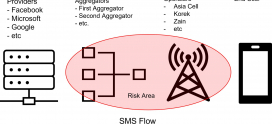AI and Cybersecurity: Managing Data Loss and Preventing Data Breach
From SMEs to big corporate entities, managing data loss and preventing a data breach is cybersecurity 101. Your information is worth millions to you and millions more to unscrupulous hackers and ransomware creators. Protecting valuable data assets is a must.
If you’re working for companies that comply with Gramm-Leach-Bliley Act for financial institutions, the last thing you want is leaking customer data into the dark web. Sure, millions of dollars of artificial intelligence and cybersecurity tools can do the job but not without the right protocols.
How do you manage any potential data loss for your institution? What steps can you take to prevent any data breaches? Here are a few management strategies you can add to your security protocols to prevent either from happening.
Ensure Regular and Consistent Backup
The most basic of all basic protocols when it comes to preventing data loss is to ensure regular and consistent backups of your data. Creating structured backup strategies that rely on several redundancies gives you the leeway to prevent a single point of failure. In case an end-user gets a system
compromised, it prevents a major loss of data, if at all.
Depending on your organization, you may want either real-time incremental backups or differential backups for sensitive data. Real-time backups can take up more storage space, so consider which data is vital for your daily operations. These can be customer data, credit card information, email listings, and other financial data.
Apart from real-time backups, you would want to add full backup schedules - usually once a week during off-peak hours. A good rule of thumb is to also test your backups periodically to make sure your data works. Create several redundancies if possible, including a possible off-site option and a cloud option if you’re working at an enterprise level.
Identify Your “Crown Jewels”
For businesses big and small, there will be some type of sensitive data that you rely on for your daily operations. Knowing your business and identifying your most sensitive information is crucial to protecting the integrity of your work. Treat them as your crown jewels.
Like in real life, treat your business’ “crown jewels” with the level of protection that you would give your most valued possessions. Identify the cyber assets that you can set as “crown jewels.”
Engage stakeholders, especially C-level and senior leadership, in potential data loss prevention protocols. Reduce the number of people with access to your crown jewels if possible.
Encrypt files and create at least three potential redundancies for them when you back it up. If possible, encrypt your data if you’re accessing it over a remote location like the cloud.
Run Regular Security Audits
Regular security audits on all digital assets is a useful protocol to add to your personal routine or your organization. Audits identify potential gaps in compliance within your team. These will also help you validate your security posture.
Do security audits that account for the dynamic nature of a team and how the team handles information security as a whole. Make a checklist of current security protocols and policies that you use. Confirm if you have secured web design for your business website and test for vulnerabilities.
Consider if your team has mission-critical and business continuity plans in the event of data loss and breaches. If you have a chance, do plugin and application testing in your entire organization. Go back on your previous security audits and review changes, if any.
Account For Phishing and Email Breaches
In many teams and organizations, the weakest point of cybersecurity are end-users outside the IT team. Phishing, email scams, malware, and ransomware are some of the biggest threats to data breach prevention. The right tools can help you do the job.
Use a thorough antivirus and antimalware security system that filters and checks malicious emails. Enforce multi-factor authentication systems, especially for end-user devices of people with access to highly sensitive data. Ensure that encryption policies are in place for both company-provided and Bring Your Own Device (BYOD) setups.
One of the most powerful cybersecurity policies is also one of the lowest-tech solutions: education. Educate your end-users too whenever possible. Give them an idea of what’s at stake. Remind them to treat any unsolicited emails with extra care to prevent anything that can endanger cyber assets.
Consider Cybersecurity Toolkit
Cybersecurity these days is not a matter of how many expert analysts you have on the team. If you’re looking for agile solutions, one good choice is to find data loss prevention and data breach prevention tools that can help you. Depending on the size of your business, you would want to use a more complex level of protection.
In a small team, a cybersecurity toolkit comprises a combination of several asset protection tools. As mentioned, antivirus and malware protection is the bare minimum that you would want. For your website, update plugins and software that you use to cover potential entry points, backdoors, and vulnerabilities.
In big organizations, an AI-powered cybersecurity posture management toolkit can be worth the money. It is still bespoke technology at this point, but they’re not as uncommon as some teams may think. CyberSecTK, Intercept X, and Symantec’s Targeted attack analytics are some of the few that come to mind.
Research and Vet Vendor Compliance
Every company has a team of vendors that it trusts for both hardware and software. It’s more important now more than ever to have third-party vendors that you trust can help you secure your systems. If you can, limit what information vendors can access and demand transparency from them.
Do your due diligence when vetting vendors. Vendor compliance is a low-tech solution that you can do to prevent any potential security issues. Keep abreast with local privacy laws and confirm their compliance.
Prepare a Breach Response Plan
The goal of managing data loss and preventing cyber breaches is to protect your cyber assets, from your website to customer information. In the event of failure at some level of protection, have a cyber breach response plan.
Develop a breach preparedness plan that will help stakeholders and employees to help in damage control. You want a plan that limits the loss of productivity. For companies that rely on an expansive consumer base, find a way to cut potential negative publicity.
Use a plan that assesses what was lost and when they were lost. You want a way to find out who did the breach and the failure points in your system. Create plans that will allow decisions on the fly in the event of data loss or potential breach.

